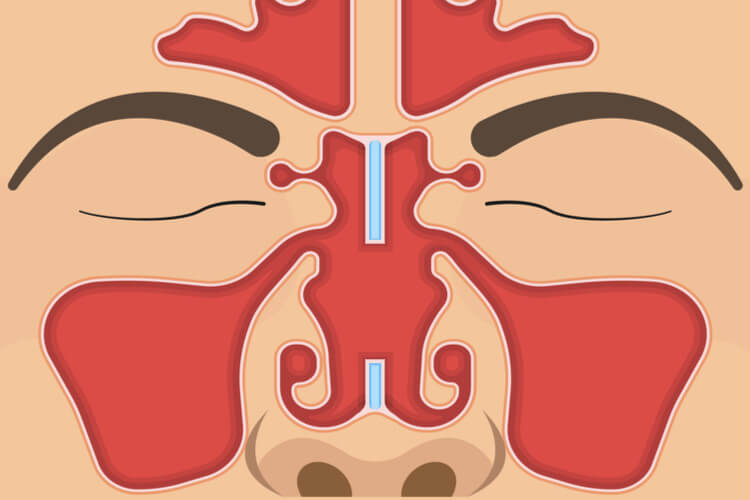What is a septal perforation?
The nasal septum is the wall that divides the left and right nasal passages. A perforation of the septum is defined as a hole through this wall. Small perforations are usually not symptomatic, but larger holes can disrupt the airflow through the nose and produce symptoms. Additionally, perforations in the front part of the nose are more likely to cause issues as compared to perforations in the back of the nose.
What are the symptoms caused by a septal perforation?
The most common symptoms caused by a septal perforation are excessive nasal crusting and epistaxis (nosebleeds). Other symptoms include difficulty breathing, clear nasal drainage, and pain. Sometimes, the hole can produce a whistling sounds as one breathes in and out.
What causes a septal perforation?
Most septal perforations are caused as consequence of nasal surgery, in particularly in patients whom were treated for severely deviated septum. Constant nose picking, cocaine use, chemical inhalants, or any other sources of trauma can also cause a septal perforation, but are generally less likely. Many rheumatologic inflammatory conditions such as Lupus, Wegener granulomatosis, Hereditary Hemorrhagic Telangiectasia (Osler-Weber-Rendu disease) can also present with septal perforations.
How is a septal perforation treated?
The primary step in management is first to understand the possible cause for the perforation. If the cause is unknown, often biopsies surrounding the area will be taken in order to screen for a chronic inflammatory condition. This is important, since an underlying disease may continue to worsen the perforation if not adequately treated. Assuming the underlying etiology for the septal perforation is determined, treatment consists of non-surgical or surgical options:
NONSURGICAL
In patients in which surgery is not preferred, optimizing the nasal mucosa with humidification, saline rinses, and ointments can help reduce the severity of symptoms. For more severe cases, a nasal septal perforation prosthesis (aka, a septal button) can be placed into the nose to plug the hole, effectively preventing any communications between both sides. In patients with a chronic inflammatory conditions, non-surgical options are preferred as a nasal perforation can reoccur despite repair.
SURGICAL
More definitive treatment can be accomplished with reconstructive nasal surgery. The healed edges of the hole are cut, and the mucosal lining from an adjacent healthy area is rotated and advanced to help cover the perforation. In people with larger sized holes, staging the repair into 2 procedures may be required in order to ensure there is enough tissue to completely close the perforation.



